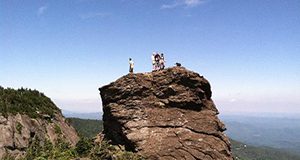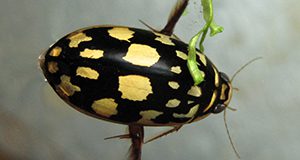Non-native species sometimes escape from aquaculture facilities, but producers can prevent these potentially harmful escapes by placing barriers like screens, covers, control structures, and ponds at vulnerable points. Aquaculture producers use these structures to prevent release of non-native species in compliance with Florida Aquaculture Best Management Practices. Further, many of the structures discussed in this 9-page fact sheet are also effective in addressing and maintaining compliance with the discharge requirements of those Best Management Practices. Written by Quenton M. Tuckett, Carlos V. Martinez, Jared L. Ritch, Katelyn M. Lawson, and Jeffrey E. Hill and published by the School of Forest Resources and Conservation, Program in Fisheries and Aquatic Sciences, the fact sheet provides escape prevention strategies and advice for building structures and barriers that can keep potentially harmful non-native species safely contained on aquaculture facilities.
edis.ifas.ufl.edu/fa197
Tag: School of Forest Resources and Conservation
Preventing Escape of Non-Native Species from Aquaculture Facilities in Florida, Part 4: Operational Strategies
Structural strategies to prevent the escape of non-native species from aquaculture facilities have numerous environmental benefits, and research at the UF/IFAS Tropical Aquaculture Laboratory has shown that structural strategies also reduce non-compliance with Florida Department of Agriculture and Consumer Services Best Management Practices. Operational and management strategies, however, are also very important. The strategies discussed in this 6-page fact sheet, the management of water, facilities, and employees, must not be overlooked. Operational strategies are easy, inexpensive, and, when used alongside structural strategies, highly effective, offering an impressive return on a minimal investment in the overall effort to minimize the escape of non-native species.
Written by Quenton M. Tuckett, Carlos V. Martinez, Jared L. Ritch, Katelyn M. Lawson, and Jeffrey E. Hill and published by the School of Forest Resources and Conservation, Program in Fisheries and Aquatic Sciences, this fact sheet is the fourth in a four-part series devoted to educating industry and other stakeholders on the importance of preventing escape of non-native species from aquaculture facilities as well as strategies for non-native species containment and regulatory compliance.
http://edis.ifas.ufl.edu/fa198
Trails, Bridges, and Boardwalks
Trails represent a landowner’s main routes for recreational activities such as walking, sightseeing, horseback riding, and bicycling. They provide access to, and through, forest land and other natural resources. They play an important role in protecting and preserving soil, water, and wild plants and animals. They can be the source of endless hours of enjoyment and relaxation. This 13-page fact sheet written by Alan Long, Anne Todd-Bockarie, Taylor Stein, Keith Bettcher, and Chris Demers and published by the School of Forest Resources and Conservation will help you plan your trails wisely and construct them carefully so that you and your guests can enjoy them to the fullest.
http://edis.ifas.ufl.edu/fr401
A Semen Extender for the Short-Term Storage of Fish Sperm
Aquaculturists worldwide use artificial or induced spawning of fish to maximize egg and larval production from fish that cannot normally be bred in captivity. Despite the wide global use of this technique, and much literature published, the success rates of induced spawning are consistently variable. One often overlooked reason for the variable success rates is that successful rates of fertilization, hatching, and larval survival are most dependent on high-quality sperm and the surrounding fluid that supports sperm function. It is difficult to obtain consistent, good-quality spermiations (releases of spermatozoa); to keep sperm alive after collection and during storage and transport; and to freeze large volumes of semen at one time. Therefore, a successful fish breeding program requiring sperm begins with a source of high-quality semen, and its proper collection, handling, and storage. This three-page article written by Frank A. Chapman and published by the Program in Fisheries and Aquatic Sciences in the School of Forest Resources and Conservation describes how to make and use a semen extender that will maximize the volume and preserve the viability of obtained semen.
http://edis.ifas.ufl.edu/fa193
Predaceous Diving Beetles as Pets and the Self-Cleaning Aquarium
Meet a new, attractive, easy-to-keep, local, non-endangered, aquatic pet: the diving beetle! Predaceous diving beetles are aesthetically pleasing yet still rare in US aquariums (though common in countries like Japan), which makes them a fun, new, unusual pet. This 5-page fact sheet written by Craig Bateman and Jiri Hulcr and published by the School of Forest Resources and Conservation provides information about the aquatic beetles, including how to catch and maintain them. Learn how you can befriend these sprightly little insect pals and allow them to bring to your home a mysterious green and quiet world, beautiful silver air bubbles and bronze iridescence, and exciting shows of feeding frenzy. And if you have to part with them, you can safely release the native species into the wild, because they are a part of our Florida natural landscape.
edis.ifas.ufl.edu/fr398
Metsulfuron-Methyl-Containing Herbicides Potentially Damaging Ornamentals when Applied to Turfgrass
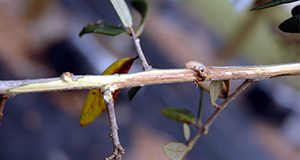
Metsulfuron-methyl, also known as MSM, is an herbicide that is used to control broadleaf weeds and certain grass weeds. It provides effective control of some of the most problematic turfgrass weeds, such as wild garlic, Florida betony, dollar weed, and small Virginia buttonweed. Metsulfuron-methyl is absorbed by plant foliage, so if landscape plants come into contact with the spray or drift they can be injured. This four-page fact sheet describes the potential problems with metsulfuron herbicides, the areas most subsceptible to damage, how to diagnose injury, and how to reduce damage. Written by Chris Marble, Jason Smith, Timothy K. Broschat, Adam Black, Ed Gilman, and Celeste White and published by the School of Forest Resources and Conservation Department.
http://edis.ifas.ufl.edu/fr400
My Pine Is Under Attack: What Should I Do? A Primarily Insect-Based Decision-Support Guide for Pine Death Management

This guide is intended to help tree owners and Extension personnel in Florida and the adjacent southeastern region make decisions about backyard pine trees that display signs of attack by wood borers. The three-page pictorial guide written by Jiri Hulcr and published by the School of Forest Resources and Conservation will help determine whether beetles have attacked a pine tree, how far along the attack has progressed, and what to do about it. There are many sources of pine stress other than insects, so for complete advice, please contact your county Extension agent or post your question at the Tree Health Diagnostics Forum at the University of Florida website: http://www.sfrc.ufl.edu/treehealth.
http://edis.ifas.ufl.edu/fr399
Common Pines of Florida
 Pine trees are highly important to Florida’s ecosystems and economy. There are seven species of native pines, and each grows best in a particular environment. People have found varied uses for each species as well. Several species are of commercial value and are cultivated and managed to provide useful products such as paper, industrial chemicals, and lumber. Some species are also managed to enhance wildlife habitat and to provide attractive landscapes. Of course, many pines grow naturally. Like any natural resource, pines may provide more benefits if they are managed wisely. This 11-page fact sheet written by Niels Proctor and Martha Monroe and published by the School of Forest Resources and Conservation gives an overview of the features and identification of the major pines found in Florida.
Pine trees are highly important to Florida’s ecosystems and economy. There are seven species of native pines, and each grows best in a particular environment. People have found varied uses for each species as well. Several species are of commercial value and are cultivated and managed to provide useful products such as paper, industrial chemicals, and lumber. Some species are also managed to enhance wildlife habitat and to provide attractive landscapes. Of course, many pines grow naturally. Like any natural resource, pines may provide more benefits if they are managed wisely. This 11-page fact sheet written by Niels Proctor and Martha Monroe and published by the School of Forest Resources and Conservation gives an overview of the features and identification of the major pines found in Florida.
http://edis.ifas.ufl.edu/fr003
Molluscan Shellfish Aquaculture and Production

Molluscan shellfish aquaculture provides high quality and high value seafood for human consumption, and shellfish provide environmentally beneficial ecosystem services, such as nutrient extraction and water filtration, to the environment in which they are grown. In the past five decades, global fisheries and aquaculture have grown steadily, and seafood consumption per capita has increased. Molluscan shellfish has traditionally been a major component of world aquaculture. Today, molluscs are cultured in 76 countries. This 8-page fact sheet written by Huiping Yang, Leslie N. Sturmer, and Shirley Baker describes molluscan shellfish aquaculture in the United States and worldwide and outlines molluscan shellfish aquaculture stages and methodologies.
http://edis.ifas.ufl.edu/fa191
Candidate Species for Florida Aquaculture: Gulf Killifish, Fundulus grandis
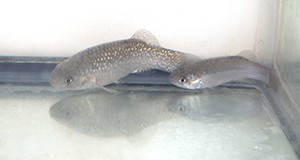
The Gulf killifish is a promising species for commercial aquaculture in Florida with the potential to help diversify the marine baitfish aquaculture industry in Florida and throughout the southeastern United States. Methods for culturing this species have improved in the past decade; this 6-page fact sheet describes the new methods and some strategies to give producers greater control of reproduction, larval growth, and survival. The publication provides the information producers need to make the most informed decision possible when considering Gulf killifish aquaculture. Written by Shane W. Ramee, Joshua T. Patterson, Cortney L. Ohs, and Matthew A. DiMaggio and published by the Program in Fisheries and Aquatic Sciences, School of Forest Resources and Conservation.
http://edis.ifas.ufl.edu/fa190
Biology, Control and Invasive Potential of Giant Reed (Arundo donax L.) in Florida

Arundo donax (L.), also known as giant reed, is a tall, fast-growing, bamboo-like grass that under ideal conditions can reach a height of up to 30 feet and a stem diameter up to 1.5 inches. Giant reed is invasive and difficult to control and has caused economic losses in California, Nevada, Utah, Arizona, New Mexico, and Texas. This species was introduced to Florida over 100 years ago and is currently naturalized in at least 26 of the 67 Florida counties. So far giant reed has not proved problematic in Florida, but recent permitting of its planting for bioenergy feed stock may increase the risk that it could naturalize into plant communities in Florida and other southeastern states and potentially cause economic losses as well as harm to native species and habitats. This 5-page fact sheet written by Pat Minogue and Seth Wright and published by the School of Forest Resources and Conservation describes the biology of this species and explains some strategies for its control.
edis.ifas.ufl.edu/fr396
Why is Exposure to Nature Important in Early Childhood?
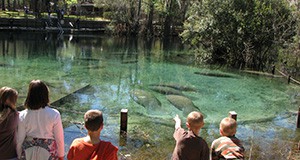
Early childhood is a crucial period for the physical and cognitive development of children. Most people who care for young children realize that children benefit from playing outside, but caretakers might not have ready access to the literature that supports their observations. This 4-page fact sheet written by Kristen Poppell and Martha C. Monroe and published by the School of Forest Resources and Conservation reviews some of the literature that shows that young children need to go outside and be around nature regularly. It describes some of the benefits children (and adults!) gain from learning and playing outdoors and includes suggestions for several resources for parents, teachers, and caretakers who hope to increase these opportunities for their youngsters.
edis.ifas.ufl.edu/fr394
Guide to Fertilization for Pine Straw Production on Coastal Plain Sites

Pine straw has gained popularity as a mulch for residential and commercial landscaping in urban and suburban areas. It is attractive, relatively low-cost, and easy to work with. Best of all, it performs well in all kinds of locations–including those difficult-to-mulch slopes! Pine straw is perfect for water-efficient landscaping (xeriscaping), an increasingly popular choice for environmentally conscious landscapers. Thanks to the growing popularity of this natural mulch material, pine straw production has quickly become an important Florida industry. Regularly removing pine straw from pine stands is not without consequences, however; the loss of the cover and nutrients pine straw provides can reduce the productivity of the pine forest. Proper fertilization and harvest techniques are crucial to maintain the viability of the new industry and traditional pine industries alike. This 12-page guide written by Anna Osiecka, Patrick J. Minogue, and E. David Dickens and published by the School of Forest Resources and Conservation explains how to fertilize wisely to offset the effects of pine straw removal and maintain the viability of pine plantations.
http://edis.ifas.ufl.edu/fr395
Some Challenges behind Communicating about Climate Change
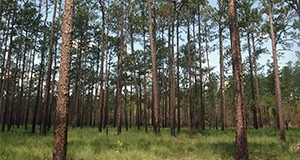 Media coverage of climate change can often leave the average person confused and unsure what to believe. However, as a trusted source of information and research, Extension has the opportunity to educate people about climate change and appropriate adaptation strategies in a scientific, unbiased way. This 5-page fact sheet outlines four challenges of climate change education. Written by Martha Monroe, Claire Layman Bode, and Mark A. Megalos, and published by the UF School of Forest Resources and Conservation, May 2015.
Media coverage of climate change can often leave the average person confused and unsure what to believe. However, as a trusted source of information and research, Extension has the opportunity to educate people about climate change and appropriate adaptation strategies in a scientific, unbiased way. This 5-page fact sheet outlines four challenges of climate change education. Written by Martha Monroe, Claire Layman Bode, and Mark A. Megalos, and published by the UF School of Forest Resources and Conservation, May 2015.
http://edis.ifas.ufl.edu/fr392
Bot Canker of Oak in Florida Caused by Diplodia corticola and D. quercivora
 This 6-page fact sheet describes the emergence of these two pathogens of oak and grapevine in North America and Florida; the signs and symptoms of infection; mechanism of host disease and death; fungal morphology; origin, host range, and classification; and management options. Written by Sonja Mullerin and Jason A. Smith, and published by the UF Department of School of Forest Resources and Conservation, March 2015. (Photo: Jason Smith, UF/IFAS)
This 6-page fact sheet describes the emergence of these two pathogens of oak and grapevine in North America and Florida; the signs and symptoms of infection; mechanism of host disease and death; fungal morphology; origin, host range, and classification; and management options. Written by Sonja Mullerin and Jason A. Smith, and published by the UF Department of School of Forest Resources and Conservation, March 2015. (Photo: Jason Smith, UF/IFAS)
http://edis.ifas.ufl.edu/fr386
Cooperative Learning for 4-H
 A simple way to facilitate discovery through cooperative learning, in which learners work together to meet a shared goal with a leader guiding them to encourage group interactions. This 5-page fact sheet provides teaching techniques and applies cooperative learning to natural resources and environmental literacy in the context of 4-H. Written by Jessica McIntosh and Martha Monroe, and published by the UF Department of School of Forest Resources and Conservation, September 2014.
A simple way to facilitate discovery through cooperative learning, in which learners work together to meet a shared goal with a leader guiding them to encourage group interactions. This 5-page fact sheet provides teaching techniques and applies cooperative learning to natural resources and environmental literacy in the context of 4-H. Written by Jessica McIntosh and Martha Monroe, and published by the UF Department of School of Forest Resources and Conservation, September 2014.
http://edis.ifas.ufl.edu/fr390
An Overview of Carbon Markets for Florida Forest Landowners
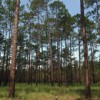 Payments for sequestering carbon in forests can be an important supplemental income source in the southern US which includes one-third of the contiguous US forest carbon stocks and supplies 16% of the world’s wood. It is difficult to understand the carbon market and certification options available to Florida forest landowners and the possible risks of participating in them. To address this need, UF/IFAS forest management specialists provide this overview of forest carbon markets in the United States as of 2014 and compare key features of the four major carbon offset certification options. This 9-page fact sheet was written by José R. Soto, Francisco J. Escobedo, and Damian C. Adams, and published by the UF Department of School of Forest Resources and Conservation, July 2014.
Payments for sequestering carbon in forests can be an important supplemental income source in the southern US which includes one-third of the contiguous US forest carbon stocks and supplies 16% of the world’s wood. It is difficult to understand the carbon market and certification options available to Florida forest landowners and the possible risks of participating in them. To address this need, UF/IFAS forest management specialists provide this overview of forest carbon markets in the United States as of 2014 and compare key features of the four major carbon offset certification options. This 9-page fact sheet was written by José R. Soto, Francisco J. Escobedo, and Damian C. Adams, and published by the UF Department of School of Forest Resources and Conservation, July 2014.
http://edis.ifas.ufl.edu/fr387
A guide to Florida's common bark and ambrosia beetles
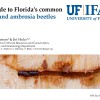 This 36-page guide provides an introduction to the biology and identification of Florida’s bark and ambrosia beetles. Written by Craig Bateman and Jiri Hulcr, and published by the UF Department of School of Forest Resources and Conservation, September 2014.
This 36-page guide provides an introduction to the biology and identification of Florida’s bark and ambrosia beetles. Written by Craig Bateman and Jiri Hulcr, and published by the UF Department of School of Forest Resources and Conservation, September 2014.
http://edis.ifas.ufl.edu/fr389
Forest Resource Information on the Internet: Connecting to Today’s On-line Resources
 In 1997, the UF/IFAS School of Forest Resources and Conservation (SFRC) published Forest Resource Information on the Internet, which provided detailed information about the Internet: its history, structure, and how to use it. It also provided a sample of forest resource websites. Much has changed since the first publication. This is the third revision of this document, providing updated information on the latest landowner assistance websites available. These state, regional, and national resources can serve as a springboard to a wide variety of natural resource information and programs. This 4-page fact sheet was written by Chris Demers, and published by the UF Department of School of Forest Resources and Conservation, May 2014.
In 1997, the UF/IFAS School of Forest Resources and Conservation (SFRC) published Forest Resource Information on the Internet, which provided detailed information about the Internet: its history, structure, and how to use it. It also provided a sample of forest resource websites. Much has changed since the first publication. This is the third revision of this document, providing updated information on the latest landowner assistance websites available. These state, regional, and national resources can serve as a springboard to a wide variety of natural resource information and programs. This 4-page fact sheet was written by Chris Demers, and published by the UF Department of School of Forest Resources and Conservation, May 2014.
http://edis.ifas.ufl.edu/fr182
Florida Forest Landowner Preferences for Carbon Offset Program Characteristics
 This 7-page fact sheet explains how carbon-offset programs operate and examines their benefits to landowners and the environment, especially in Florida and the southeast US. A summary of a recent study of Florida forest landowners is used to better reveal views on forest carbon-offset programs and their willingness-to-accept monetary compensation for their enrollment in such programs. Written by José R. Soto, Damian C. Adams, and Francisco J. Escobedo, and published by the UF Department of School of Forest Resources and Conservation, July 2014.
This 7-page fact sheet explains how carbon-offset programs operate and examines their benefits to landowners and the environment, especially in Florida and the southeast US. A summary of a recent study of Florida forest landowners is used to better reveal views on forest carbon-offset programs and their willingness-to-accept monetary compensation for their enrollment in such programs. Written by José R. Soto, Damian C. Adams, and Francisco J. Escobedo, and published by the UF Department of School of Forest Resources and Conservation, July 2014.
http://edis.ifas.ufl.edu/fr388


